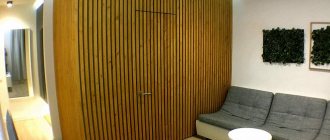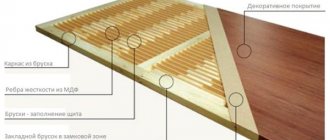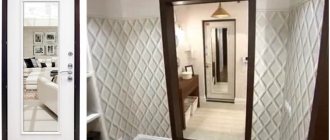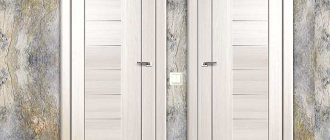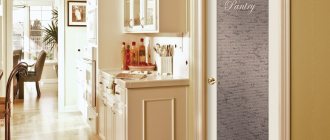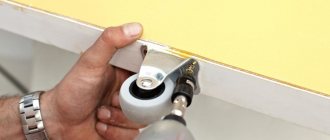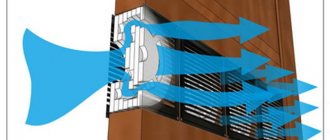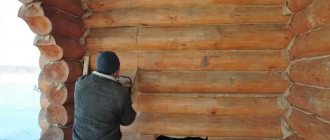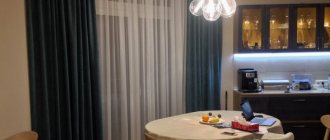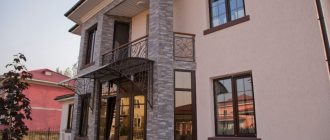What is a panel?
First you need to understand the history of the name of the product, which served as the starting point. The panel is a thin insert in the door leaf; it is thinner than the frame itself. It can often be seen on interior doors. It is a thin sheet that is inserted inside the canvas. Can be made from any material.
Thanks to the panel, it is possible to avoid ordinary boring products, achieving originality and decorativeness by giving them unusual shapes. This sheet decorates the door and creates an accent on itself or its fragments. This technique allows you to create a product that is stylistically designed and matches the rest of the interior. The canvas can display three-dimensional elements , textured patterns, etc. The design depends on the wishes of the customer and the imagination of the manufacturer.
Features of a panel door
Before understanding how to make panels, you need to understand what such a door is. As you already understood, this is an insert with which you can give the door leaf an attractive appearance.
The structure of the canvas is not simple, and the panels, especially wooden ones, can have a rather complex architectural form: milling, carving.
The design of such a door can be considered framed, since it consists of a frame that forms a contour frame, mullions (transverse crossbars), and panel liners that fill the cells. The more mullions, and therefore liners, on the door, the more interesting it looks, the higher its strength, and, accordingly, the price.
Fabric structure
The web binding consists of bars: the lower part, that is, the empty part, can be thicker and consist of several composite parts. This is necessary in order to attach the protective baseboard to it.
The panels are inserted into specially cut grooves on the strapping and intermediate beams. Well, if there are grooves, then there must be tongues: along the perimeter of the inserted elements they are - only here they are called figares.
- Today on sale you can see doors whose lining only imitates panels . Manufacturers or retailers may call them paneled, but in reality they are simply molded with a honeycomb filling. The buyer, to put it mildly, is being misled - and we think that our instructions will help you figure out what's what.
- Real panels should only be plug-in . They can have a fairly simple flat shape, smooth, or, conversely, a voluminous surface, which, in fact, has long become a classic in door manufacturing. In a more complex version, these are stacked liners, which are a layout of lamellas joined in a tongue-and-groove manner.
- In wooden panels, panels most often have a figurine design . That is, they are thicker in the middle, and thinner at the edges so that they can be inserted into the groove. The connection point is closed with a glazing bead (kalevka) or a decorative baguette.
In metal doors and products made from valuable types of wood, the panels are usually floating, but for a beginner it will be difficult to make this option. We'll talk about doors with figurine panels.
Application of panel doors
Such doors are used everywhere and have no restrictions in their scope. These models can be seen both in offices, public places of various institutions, and in residential buildings.
Paneled doors are used to design interior openings and entrance doors. , materials and functional characteristics play a fundamental role .
Interior models with panels are made of lighter materials, for example, it could be plywood or MDF sheet. Entrance structures are often made of metal or hard wood.
What is it and what does it consist of
Paneled interior doors are among the popular types of doors. Every year the demand for such products is growing. Moreover, the models are presented in a wide selection and different designs.
First you need to understand what a panel is. The term refers exclusively to the construction industry. The panel is a plywood or thin board that is inserted into the frame. A similar manufacturing algorithm is used for a wooden paneled door.
The basis for the structure is the lower frame section. As a rule, it is wider than the side and transverse parts.
The structure consists of a wooden frame made of solid timber. But glued laminated timber can also be used. The wood is selected quite carefully and then dried. The frame consists of 4 elements fastened together that make up a single frame. Its internal area includes several grooves where the panel is placed.
Panel installation methods:
- Placement in the groove area.
- Fastening with decorative putties. Most of them end up above the door plane. This system helps you quickly change the panel if necessary.
To strengthen the structure, especially for doors for open spaces, metal cladding is made, an option made of stainless steel or aluminum. Higher models are equipped with brass and bronze plates. This protects structures from mechanical damage.
Design
What the door panel is essentially has already become clear. Now we need to figure out how it is attached. That is, to understand the design as a whole. The panel is inserted into the frame, which is made of solid wood, then fixed inside using special grooves. To prevent its movement in the frame, glue or thin glazing beads it in place.
Paneled structures have their own classification, the criterion being the shape of the insert. The panel is:
- Flat. A thin sheet of material is used that has no protrusions or cutters, that is, absolutely smooth.
- Volumetric. It contains volumetric shaped elements with milling around the perimeter. This design is classic and often used.
- Typeset. The base consists of several lamellas that are joined together using a tongue-and-groove method.
There are the following varieties that need to be distinguished:
- Figareinaya. A figarea is an internal insert with thick edges that gradually become thinner towards the edge of the piece. This panel is attached using longitudinal grooves and fixed with wood glue.
- Floating Thanks to the gaps left around the perimeter, destruction of the material is prevented. Depending on the microclimate in the room, the insert can change in size. Attached with glazing beads.
Features of the panel and its design
Paneled doors always stand out among the other variety of models. The design of the interior buildings resembles a window. They consist of a frame, which acts as a frame, and panel inserts.
The main structural elements of paneled doors:
- The wooden frame is the main structural element, the frame to which other parts are attached;
- Middles - bars in a horizontal position, which are attached in the middle part of the canvas;
- Panels - can be made of different materials and are attached to the door frame.
The frame is made from solid or laminated timber. The design includes 4 parts that are fixed together. The bottom part is usually wider than the top to strengthen the doors. In general, it is possible to flash metal through the entire lower part of the structure. But only input types can be strengthened in this way.
The glass on the door panel can be decorated with stained glass. But such decor is expensive, so painting is usually used. It is made double-sided, resulting in a stained glass effect.
The panel is the main decorative element of the door. It can have different shapes. A variety of decor is also used. Glass, plywood, chipboard, and MDF are used as materials for the manufacture of paneled models. Special grooves are provided for fragments. The material is fixed using spatulas. Usually these parts are overlaid. They got their name due to the fact that their lower part overlaps the plane of the door. These features make it easy to notice the glass if it is damaged.
Materials
Not only the appearance of paneled doors depends on the material of manufacture, but also the characteristics, margin of safety and reliability, as well as cost.
To make the frame of the door leaf, take a solid wooden beam . Not only wood, but also other materials are suitable for insertion. This already turns out to be a combined type of product.
Wooden versions of products involve the use of soft varieties and more durable valuable species. A pine, cherry or spruce door will not cost very much. Oak, teak, beech, and walnut are considered more valuable and durable. Red and black trees belong to the elite class.
Important! Wood structures can combine several species. Therefore, in order to prevent the destruction of the panel due to changes in temperature and humidity, you need to clarify this nuance with the seller before purchasing.
Inexpensive combined models combine MDF sheets, plywood, chipboard, and pressed paper. Blind inserts are covered with leather or its substitute. Whiter, more interesting products are obtained through the use of glass. It can be regular, matte, colored, embossed, stained glass, with photo printing or oracal, etc.
The nuances of making a door
So, we will assume that you have developed a sketch, stored tools and materials, manufactured and installed the door frame. What's next?
Before you start producing panels, you need not only to make the parts of the door leaf, but also to assemble part of the frame. To do this, connect one vertical post with two horizontal frame parts: a sill profile and a frame (the upper element of the frame).
Drawing of a center for paneled fabric
So:
- Despite the fact that you have a drawing with dimensions, you need to measure the centerpieces and future panels after the fact, since it may well turn out that there are some deviations. This is especially true for models where the horizontal strapping bars have a curved shape. First, a centerpiece is installed on the frame: tenons are cut on the block on one side, it is tried on, and then the second end is processed according to the pencil mark.
- Depending on the structure of the door, the crossbars are inserted with tenons into the grooves of the strapping parts. If there are 6-8 panels on the door, then there will be several middle panels. The length of the horizontal elements usually corresponds to the width of the canvas. At the same time, the vertical mullions turn out to be short, and their height is equal to the distance between the horizontal elements.
Element-by-element layout of a door with panels
The manufacture and installation of mullions is carried out in the following order: first the long parts, and then, after measuring and fitting, the short ones. Only after all the middles are in their places can the second vertical stand be mounted on the frame. Now the frame is completely assembled, and you can start making panels.
Panels
So, in front of you, leaning against the wall, is the frame of the door leaf - now you need to take the dimensions of the future panels. This is best done using pieces of slats, which, if there are several identical panels on the door, will later play the role of a template.
When measuring, it is necessary to take into account the temperature gap so that when the wood expands, the panels do not rest against the frame and the posts do not tear off the tenon.
Note! The template strip inserted into the cells of the panel should move freely left and right, but not fly out of the groove. The difference in its length and the distance between the bottoms of the opposite grooves should be approximately 6-8 mm.
- Now, using the slats, you need to make another template - this time for the panel itself. This especially facilitates the marking process when curved cuts have to be made on the tree. The template is cut out of thin plywood, hardboard, or hard fiberboard, tried on a cell, and only then they begin to make blanks for the panels.
Making figarea panel
- It helps you avoid numerous measurements, as well as avoid mistakes when cutting material - including tolerances for thermal expansion. Having cut the workpiece to size, you can start cutting the figarea field - for this you need special attachments for the router. They are different, so the processed ends of the panel may differ in configuration.
When milling them, the volumetric part of the workpiece is removed, and along the edges thin ridges (figareas) are obtained, which, when installed on the frame, are inserted into the grooves of the strapping beam. If there are uneven spots in some places, they are removed with a grinder.
Design
Thanks to the almost unlimited variety of materials used, a paneled door can reflect any style and design . Therefore, choosing the optimal model that meets the requirements of a certain interior style is not so difficult.
For living rooms, kitchens, and living rooms, panel doors with translucent inserts are usually selected. In fact, the ideal solution is to purchase a canvas with glass in the central part. Of course, blind inserts are more suitable for bathrooms and toilets. However, this does not mean that the choice seems boring. A unique interior can be achieved by decorating doorways in one style.
an important role in the process of creating a wide palette of models of any style. Thanks to coatings such as PVC, veneer, laminate, etc., as well as various cutters, a variety of inserts is achieved. They can be straight or curly in shape, contain additional overlays, carvings, volumetric elements, or elaborate relief. Over time, it is possible to replace the boring middle.
If the paneled door has glass, then you can show your imagination and put a design on it, cover it with a film with a pattern, photograph or any other image, and also turn it into a stained glass window. This design knows no boundaries.
Paneled interior doors. Description of design and capabilities
From the article you will learn:
It is easy to distinguish paneled doors from other models - their leaves consist of individual elements, and they themselves resemble a chocolate bar divided into segments. The main parts are panels, inserted into the door frame and securely fastened to the frame.
In the recent past, doors of this type were made only from solid wood and were actively used in the manufacture of cabinet furniture: cabinets, dressing tables, chests of drawers, etc. Today, the range of materials used has expanded significantly, and in furniture production these structures are used much less frequently.
Advantages and disadvantages
From all of the above, we can conclude that paneled doors have the following advantages , such as:
- Decorative and aesthetic appearance.
- Thanks to the thin insert, the weight of the canvas is reduced.
- The structure can be disassembled with the replacement and restoration of its elements.
- The durability of the structure is determined by the presence of an insert made of a different material. After all, a solid massif of soft rocks can dry out within a few years.
- Reducing prices by reducing the amount of material and replacing expensive elements with cheaper analogues.
The use of low-quality raw materials and non-compliance with the rules of technology during production are shortcomings that depend on the integrity of the manufacturers and are entirely on their conscience. In general, loin doors are an ideal option and can be installed in any home.
Thus, the panel is the central part of the door, which is distinguished by a number of positive features and often has an aesthetic function, as it is shaped into a variety of shapes, decorated and made from a variety of materials.
Doors
50 votes
+
Vote for!
—
Vote against!
Being an essential element of any interior, interior doors perform not only an operational, but also a decorative function. The design and functional features of panel doors allow them to successfully combine both directions, making panel doors not only reliable, but also an attractive element of the interior. However, their popularity is due not only to dual functionality, but also to many other advantages that distinguish paneled structures from other types of interior doors, which will be discussed in this material. If you prefer paneled doors, there is absolutely no need to purchase factory designs - you just need to make them yourself. It is worth noting that homemade models have some advantages that are not typical for factory products. The advantages of homemade models, as well as features and step-by-step instructions for their manufacture are also the subject of this article.
Content
- Paneled doors: definition and a brief excursion into history
- Features of the design of paneled doors. Types of panels
- Popular materials for making panel doors and their advantages
- Making paneled doors from solid pine: nuances and features
- Advantages of self-made panel doors
- Materials and tools for making paneled doors
- Step-by-step instructions for making an interior panel door
- Finishing a paneled door as the main component of its long-term operation
Paneled doors: definition and a brief excursion into history
Having become the first models to appear on the Russian market of interior doors, paneled doors quickly gained popularity among consumers, which is undoubtedly due to the optimal price-quality ratio. In the 90s, the most popular model was white paneled doors made of MDF, which clearly proved their efficiency and durability.
What is a panel? Ushakov’s dictionary gives the following definition of this term: “A panel is a thin plywood or board that is inserted into a frame made of any materials.”
Accordingly, we can conclude that paneled doors are doors whose design implies the presence of a frame, most often wooden, which acts as a load-bearing element, as well as an insert - a panel. It is worth noting that in modern panel doors the insert can be not only wooden. But in most cases, panels are made from solid wood or combined materials, which include MDF and solid pine.
Features of the design of paneled doors. Types of panels
Paneled doors are almost impossible to confuse with any other types of interior doors. Their design features are similar to those of a conventional window, since the latter consist of a visible frame that acts as a frame, and thinner panel inserts. Thus, the main structural elements of a paneled door are the following elements:
- The wooden frame, also called the frame, is the main structural element onto which the remaining door parts are subsequently attached. Its production is carried out from solid wood, as well as laminated veneer lumber. Most often, the frame is made of four parts connected to each other. To increase the strength of the structure, the lower part of the frame is made slightly wider than the side and top. A more modern approach to increasing the strength of panel doors is to reinforce the entire bottom of the structure, which is sheathed with sheet metal such as aluminum or galvanized steel. However, it is worth noting that the use of such a technique is relevant for strengthening the structure of only paneled entrance doors;
- Middle blocks, which are horizontally located bars, fixed in the middle part of the canvas;
- Panels, which can be made of various materials and are fixed in the door frame. Often they are the main decorative element of the door. They are decorated with paintings or given the most bizarre shape. A variety of materials are used for their manufacture, most often glass, chipboard, MDF or plywood. The fragments are inserted into special grooves, after which they are fixed using decorative beads (often these are glazing beads, which received this name because part of them extends onto the plane of the door. These fastening features make it easy to replace a damaged fragment, for example, broken glass, and also allow you to radically change the appearance of an interior door.
Main types of panels
- Traditional smooth panels made from identical planks with a smooth surface. They can be used to make both entrance and interior doors;
- Figare panels, the distinctive feature of which is the presence of a convex middle part, gradually thinning towards the edge;
- Floating panels, for the manufacture of which boards of the same thickness were used as for the manufacture of the frame;
- In addition, there are double and single panels. To assemble single ones, planks laid in one row are used, while double ones are made of two rows of planks separated by a layer of insulating materials or an air gap.
Paneled doors photo
Popular materials for making panel doors and their advantages
Often, paneled doors are made from solid wood. The breeds used in this case can be very diverse: from those that are found everywhere in central Russia to exotic varieties imported from the most remote corners of the planet. The choice of breed has a significant impact on the cost of the finished product, and often on its production time, which can be quite variable. For the manufacture of paneled doors, only selected, carefully dried wood is used. Not only species from the low price category, such as pine, birch or spruce, are in wide demand, but also moderately expensive, but at the same time more durable hornbeam, oak and beech, which, if properly used, will last for several decades.
The most common material for the manufacture of panel doors is pine boards, the distinctive feature of which is a pleasant honey shade, attractive texture and ease of processing, and the natural antiseptics included in the wood structure allow the material to retain its original characteristics for a long time. The unique features of the material make it possible to install doors made from solid pine, which can be installed not only as interior doors, but also as entrance doors. This is due to their high strength and wear resistance, which have a positive effect on the service life of the door leaf. Thus, the popularity of wooden panel doors made from solid pine is due to their following advantages:
- Manufactured from natural, environmentally friendly raw materials , which during operation do not pollute the atmosphere with harmful fumes, as a result of which it is absolutely safe for human health. Despite the fact that solid pine is a material belonging to a low price category, its durability leaves no doubt and at the same time is in an optimal ratio to the price. When properly used, they will not only last for decades, but will also not lose their original characteristics;
- Resistance to mechanical stress allows doors made from this material to maintain strength and resistance to mechanical damage. Particularly important is the fact that solid pine remains resistant to changes in humidity and temperature, which makes it possible to install paneled doors made of solid pine as external doors;
- Aesthetics and decorative properties are also difficult to ignore. Solid pine has an attractive texture and color, thanks to which panel doors can decorate any interior, and their external counterparts will noticeably embellish the exterior of any home;
- And, of course, a very affordable price , which cannot go unnoticed. It is thanks to our moderate pricing policy that you will receive a high-quality and reliable door at a low price.
Making paneled doors from solid pine: nuances and features
Currently, there are several ways to make paneled doors from solid wood. Manufacturers offer several main production methods:
- Production of paneled door panels using laminated pine timber;
- Production of doors from natural solid pine, which excludes the use of certain additional substances.
Each of these methods has its own advantages and disadvantages. As for the first method, in practice it is carried out quite easily. Doors made from laminated veneer lumber have undoubted strength and resistance to aggressive environmental influences, since during the gluing process the bars are firmly attached to each other and are almost impossible to tear apart from each other. After gluing the bars, they are thoroughly dried and then varnished, which not only increases their strength, but also their aesthetic characteristics. Due to their high strength, paneled doors made of laminated veneer lumber are installed as external doors;
If we consider the second method, we can note that the manufacture of a paneled door from natural pine presents certain difficulties, which is why in most cases such doors are made to order, and the cost of this undertaking is often quite high.
Advantages of self-made panel doors
If you decide to install a paneled door, there is absolutely no need to purchase a factory-made option. If you have a little experience and the skills of a home craftsman, it will not be difficult for you to make a paneled door with your own hands, especially since in this article we will provide step-by-step instructions for its manufacture. Let's consider the main advantages of panel doors made independently:
- Lower cost of homemade doors, in contrast to their factory counterparts;
- Self-installation of paneled doors according to certain standards will save you from the need to adjust them to the dimensions of the doorway;
- Taking into account certain manufacturing features, homemade panel doors are less susceptible to external influences, and therefore are less susceptible to destruction under the influence of temperature changes.
Materials and tools for making paneled doors
Before you make a paneled door, stock up on a very modest set of tools.
Required tools:
- Hacksaw for woodworking;
- Chisel and screwdriver;
- Pencil and tape measure;
- Sandpaper with fine and coarse grains;
Initially, decide on the materials for making paneled doors. To make a reliable and durable frame, it is necessary to select wood species with high strength characteristics and resistance to changes in the external environment and microclimatic parameters. Thus, it is better to opt for the most durable types of wood, such as oak or ash. Pine is also a durable material characterized by an optimal price-quality ratio. It, like previous breeds, is resistant to changes in microclimatic parameters such as humidity and temperature.
It is better to choose chipboard or plywood as materials for making panels, which will make the structure lightweight and, at the same time, inexpensive. If you want to make the doors more massive and solid, use more expensive solid wood. To enhance the decorative characteristics of the door, glass inserts are often used, which can be frosted or transparent, and also decorated with a wide variety of patterns. Doors with stained glass inserts look very expensive and respectable.
Since real designer stained glass is a more than expensive pleasure, decorative painting on glass is often used, which is made double-sided to create the effect of a full-fledged stained glass window.
Necessary materials:
- To make the frame, we will need thick boards with a width of up to 50 mm or 3 bars, 2 of which will be used to make the vertical part, and 1 to create the transverse upper part;
- To make panels, stock up on plywood or chipboard; if you wish, they can be replaced with glass. If you plan to make glass panels, additionally prepare glazing beads;
- In addition, we will need glue and screws;
- Door fittings (door hinges and handles);
- As well as materials for the final finishing of the door (various specialized coatings, varnishes and paints).
Step-by-step instructions for making an interior panel door
The initial installation stage consists of installing the doorway. It must be manufactured in such a way that any distortions and differences in width and height can be easily eliminated. After making the door frame, you can begin installing the paneled door yourself;
It’s better to start making it by developing a sketch that is created taking into account your personal preferences. However, experts advise a novice master to start by installing a door with six panels. Having created a rough sketch of the door, it is detailed, all the necessary dimensions are marked on it, after which the necessary materials are purchased according to the selected dimensions;
Then they start making the frame. To do this, use a tape measure to measure the width of the doorway.
Please note that the dimensions of the door will be 4-6 mm smaller than the dimensions of the door frame.
Taking into account the obtained dimensions, the base for the door is made from timber. To do this, mark the required length with a pencil on a timber free of mechanical damage and unevenness. The excess part is sawed off with a hacksaw. The result should be 2 main vertical posts and 2 transverse ones, which are fixed in the lower and upper parts of the structure, as well as internal transverse rails that serve to increase the strength of the structure.
In order to tightly fasten the parts together, grooves and tenons are made in the right places, ideally suited in size. To increase the strength of the fastenings, the parts are coated with wood glue, and chamfers are made in the places where the panels are attached.
Having made the frame, proceed to installing the panels. If you use wood, it is better to opt for solid boards - this will avoid creating a prefabricated chamfer. In accordance with the dimensions of the chamfer, a finished part is cut out of the solid wood and cuts are made along its edges, which will allow the part to be tightly fastened to the chamfer.
If you do not have the opportunity to create a panel from a solid mass, but you still want to use wood, make panels from pieces of wood, fastening them together using a system of grooves and tenons, and additionally coating the joints with wood glue. After making the panel from pieces of wood, make cuts along the edges for fastening with a chamfer.
Important! Panels made from solid wood can be additionally decorated with an additional pattern, but this requires special skills and tools.
If the panels are made from chipboard or plywood, they are cut to the required dimensions.
If you plan to make glass inserts, they are also cut out according to the dimensions of the door, or when making crossbars and lintels, they are guided by the dimensions of the inserts.
If you decorate the door with glass decorated with double-sided paintings imitating stained glass, the design is applied before the panel is inserted into the frame. Glass panels are secured using glazing beads, since this method allows you to replace the insert if it is damaged.
Finishing a paneled door as the main component of its long-term operation
There are two main ways of processing paneled doors, the first of which is called solid and implies the same design of the frame and panel, and the second is contrasting, which implies a clear highlight of the panel.
Finishing an interior or entrance door made from solid pine involves treating its surface with antifungal and antiseptic preparations that protect the surface from aggressive environmental influences, and also give the wood fire-resistant properties and prevent the aging of the wood. However, unlike other processing methods, for example, painting with enamel, treatment with antiseptic solutions does not hide the texture of the wood and, due to the inclusion of coloring pigments in the antiseptics, they improve its shade and overall appearance. Several years ago, stains that interacted with the top layer of wood, as well as varnishes, were used for these purposes. The level of pigment saturation is determined only by the preference of the customer, who negotiates in advance with the manufacturer the breed he needs. But, despite the above advantages, wood that has been treated with these compounds has one significant drawback, the essence of which is that when damaged, a light stain forms on the surface of the wood. This is due to the fact that the pigment penetrates only into the upper layers of wood, and therefore, when choosing between natural wood and material treated with these compounds, give preference to the natural option.
As a finishing treatment for the door leaf, water-based acrylic varnishes are used, which, unlike solvent-based alkyd varnishes, change the tone and structure of the wood to a lesser extent and are also more environmentally friendly. As for the choice between matte and glossy surfaces, it is important to note the fact that dirt is more visible on matte surfaces, while glossy surfaces hide the wood texture, making the color more saturated. In this regard, we advise you to give preference to semi-gloss and semi-matte coatings for paneled doors.
